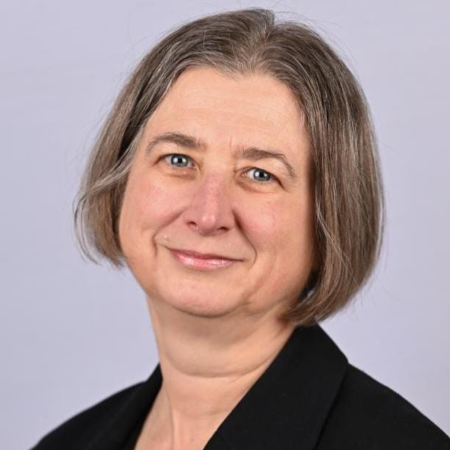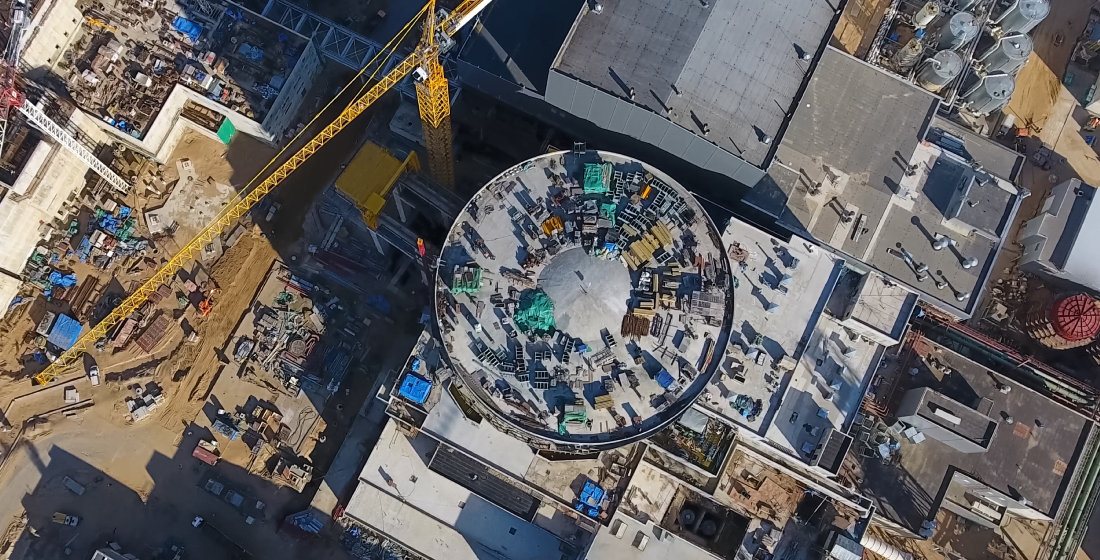A tastier dish for investors in trade assets: Will HSBC and AllianzGI make for a better spread?
When the self-styled biggest global provider of trade finance teams up with a large European asset manager to wrap European trade finance assets and lend to institutional investors, it should be a winning combination. But how can HSBC and Allianz Global Investors avoid the pitfalls of the past? TXF spoke to HSBC’s Surath Sengupta and AllianzGI’s David Newman to find out.

When I bought duck pate from a supermarket last week, I was amused to see that the amount of duck is only 23%, pork fat and water are the next largest components, glucose syrup, tapioca, chicken. In this case, the pate was not healthy, but quite tasty, but it put me in mind of what used to pass as trade finance conduits in the pre-crisis days when banks (and investors) were guilty of perpetrating (and falling for) the greater fool theory.
“Conduits were where banks were palming off what they didn't want into a vehicle and hoping some idiot would go and buy them,” says one former banker. Conduits were stopped in those iterations after the global financial crisis, but banks still want to get trade assets off their balance sheets and, apart from selling to other banks their options have been limited, and potential institutional investors have needed persistence, guts and a degree of ingenuity to find and analyse trade assets.
Avoiding investing in substandard trade pâté?
On May 22 HSBC, which provides in excess of $750 million in trade finance, the largest from any bank, and Allianz Global Investors (AllianzGI), which manages more than €535 billion in assets, announced the creation of a trade asset securitisation fund that aims to be an appealing investment for institutional investors. HSBC will wrap selected European corporate customers’ [in the first instance] trade finance assets into notes. The trade assets will range from trade loans to structured solutions such as supply chain and receivables finance. The notes will be bought by AllianzGI’s freshly-minted Allianz Working Capital Fund (ALWOCA) to offer to their clients later in the year.
Surath Sengupta, Global Head of Trade Portfolio Management and Distribution at HSBC is a man with ambitious goals. “We’re aiming for nothing less than a major reform of the trade finance market that will benefit exporters, importers and investors keen to buy into real economy transactions,” he said.
“This reform is important,” Sengupta tells TXF. “Why? Trade finance is originated by banks and traditionally distributed in the secondary market primarily to other banks. The reason for that is that it’s not an easily understandable asset class for non-bank investors. They don’t have the infrastructure to originate, manage the risk or service the business operationally.” That said, for any asset class to evolve, it is important that there is a variety of liquidity sources. “There is a demand from our relationship clients who, as they want their supply chains to be financed, want diversified pools of liquidity. They don’t want to be caught with only one source of liquidity. It’s good for the whole world of trade.”
Sengupta adds: “All asset classes evolve in this fashion. However, a bridge needs to be built between the trade finance asset class which banks originate and the alternate investor liquidity that’s available. There is a huge amount interest from non-bank financial investors, but a bridge between the two doesn’t really exist. At the moment investors invest typically in supply chain assets directly or in a securitisation format. Typically these are pooled or in tranched format.”
What’s different with using the new ALWOCA structure? “The whole point is that it allows us to take any form of trade asset, convert that into a securities note format and allows the investor to buy into it,” says Sengupta. “It can be any kind of trade asset that we have in our books: it could be receivables, payables, trade loans, etc. It just depends on what is the risk appetite, yield expectations the investors have as long as they are okay with the risk. It just allows them to buy in a format which they've been working with already. So it makes it very easy for investors to come in and buy it. And then it's very flexible. It's almost like a plug and play approach for both banks and investors.”
Turning the trade asset into a note is a different approach to the way trade assets are typically sold on to banks. “This is why it's so good,” says Sengupta. “Basically we're taking what we do in the bank-to-bank market where we sell assets ‘as is’ but we use risk participation agreements, we're taking that to the non-bank market where risk participation agreements, etc, can be difficult for non-bank investors to come in.”
What’s in it for the investors?
“Why are we getting involved?” David Newman CIO, head of global high yield at Allianz Global Investors (AllianzGI) asks, answering his own question: “There is a growing gap between the demand for trade finance and the amount of capital banks have to meet all of it. And at the moment the amount available of that gap for institutional investors is probably only 2% of the potential. We, as a fundamentally active credit manager, always look for alternative ways of leveraging our credit experience for our investors and a lot of trade finance is providing money in a different form to companies which we already analyse across the AllianzGI Group”.
“Basically, providing trade finance to company X is the same as providing a loan to company X or providing a bond. There are differences in trade finance such as late payments, dilution of payments, etc. But in the end it is credit with extra bits added to it,” says Newman. What many of AllianzGI investors have been concerned about over time is: “First, the volatility of the capital markets. Second, the duration of bonds in the capital markets as well [there's lots of interest rate risk and long term credit risk if you buy a bond for 10 years]. Third is the fact that many of their portfolios, even though they are supposed not to be correlated, actually are.”
Newman explains that as trade finance is very short term and because it's illiquid it doesn't move in the same way as capital market instruments. “But if investors are worried about capital markets closing at some stage in the future, we're not, but it happened in 2008, the last thing which will stop going on is trade because companies need to trade to keep going. And if a company ever got into a troubled situation, often its trade obligations will take preference over its other financial obligations as well. So it's a pretty attractive new credit instrument for institutional investors.”
Skin in the game
What will investors actually be buying when they want trade finance assets from ALWOCA? How, in short, will they be able to judge the fund’s ingredients?
"The first major difference between what we're doing and a conduit is that there's no cherry picking. What that means is the banks have to show us everything and we choose what we want to invest in rather than they just show us what they want to show us,” says Newman. “The second thing is that all the transactions we're doing we're co-investing, so the banks are in them with us. It stops them from selling us stuff into a bad conduit. The third thing is that while obviously working with HSBC is a fantastic partner for us, ALWOCA is basically an open architecture fund which can work with a number of different partners.”
That means the fund is not exclusive. Newman says other partners will be bringing other streams which are different from HSBC. “So for example we're are already investing in some SME loans with a totally different provider,” he says. That provider is a fintech, as yet not publicly named. It’s early days as the fund has just been launched. “We're going to be seeing different sourcing streams and we will be constructing a portfolio in line with our global views of the world with diversification by rating categories, by geography, by industry by provider,” Newman says.
Turning into securities, but not securitisation old-style
Newman is also quick to explain that there are no plans for securitisation of the trade finance receivables. “There is a misnomer on securitisation,” he says. “For an asset manager to invest in a trade finance receivable, sometimes it needs basically to be turned into a security, and have an International Securities Identification Number (ISIN) put on it. When talking about securitisation, [the perception is of] taking a whole pool of them and start ‘tranching them up’. We will be having an ISIN stamp on the securities as we need to, but we will not be taking a whole load of them and tranching them up.”
The press release is carefully worded. “AllianzGI acts as Portfolio Manager for the special purpose vehicle (SPV) selecting the transactions purchased. The SPV’s assets are then wrapped into notes that ALWOCA will buy, enabling the fund to take exposure to trade assets through a securities format. This model can flex to fit the supply of suitable assets and buyer demand, with AllianzGI aiming to invest a large portion of its ALWOCA fund into them. ALWOCA is seeking to have a duration of below one year and generate returns significantly in excess of those available in public markets for the same duration.”
“The loans from HSBC go into an SPV, and that has an ISIN,” explains Newman. “You can find [the SPV] on Bloomberg. The loans, or number of loans will have an ISIN. We will buy the SPV note and inside the SPV will be loans which we have chosen along with our partners at HSBC. There is an SPV but no tranching. It's a wrapper. All the loans are wrapped into a tradeable instrument.”
The ALWOCA fund is going to be listed on Bloomberg, so returns and size will be visible. "You've got to remember that trade finance is a new asset class for the institutional investor and like many things that are new it takes some time for critical mass to be achieved. But I think we're now in a situation where we have the right architecture internally with AllianzGI, plus the best partner externally with HSBC," says Newman.
Sengupta points out that while an SPV structure is nothing new, what is new is “the fact that it is done on a transaction by transaction basis. It allows the bank the flexibility to choose what we want to keep on our balance sheet and where we want our liquidity to come in and from an investor perspective, it gives them full transparency that that is the asset they want to buy. There is no commitment from either side that you need to have a full pool of assets that are continually replenished, so there is the flexibility and transparency that allows this to be transparent, which is what is unique about this.”
The first transaction with HSBC has already been done, converting a client trade payable asset into a note. However, Sengupta was unable to disclose the client name, price or type of trade. “We will see the market evolving and at that point of time I'm sure price discovery will become much more transparent.”
How does this sit with other trade finance market reform initiatives that HSBC is participating in, such as the new Trade Finance Distribution Initiative (TFDI), which includes 14 banks and FIs? Sengupta says: “We want to drive more reform in this market, and make it more systematic, standardised and with multiple investor types. We believe we have a responsibility as the world’s largest trade finance bank to develop this market, and hence we are also working on the industry side too, collaborating with other banks, technology partners, funds and the TFDI is a good initiative. All the players coming together will fast track the creation of this ecosystem which is more transparent, standardised and supported by the right level of technology.”
And if it seems, to many of us, a bit rum to call trade finance a new asset class, it may be new to many institutional investors at least. Newman at AllianzGI certainly has the trade finance chops – he started his career more than 30 years ago at a UK bank, stamping trade invoices and discounting them.
Now time to get up to speed on the markets.
Here's our exclusive TXF Essentials subscriber content
ECA debt: A financing tool to scale the delivery of SDGs
Sustainable Development Goals (SDGs) are the talk of the export finance community - and beyond. But ECAs and banks need to align their SDGs to help fill the sector's $2.5 trillion a year financing gap in emerging markets.
Finding the right mix for African power projects
African power generation is still dominated by a mix of hydro and coal, but renewables are finding good purchase in almost every country and at increasingly affordable scale and cost.
Plus, to top things off...
the news you thought you had but didn't
Sucafina signs $300m sustainability-linked refi
Soft commodity trader Sucafina signed a $300 million sustainability-linked borrowing base facility this month.
Lote joins Zenith Bank as head of international development
Goretti Lote has joined Zenith Bank as head of international business development and will be based the bank's London office. Lote will report to Chidi Ogbata, head of business development, and will head up a team looking after corporates in Europe, Asia, the Middle East, the US and Australia.
Sonnedix 70MW Italian solar portfolio refi nears
Solar power producer Sonnedix is set to refinance the debt package stapled to a 70MW portfolio of solar plants in Italy next week.
Carbon Holdings TPC project faces more delays
Carbon Holdings’ $10.9 billion ECA/DFI-backed Tahrir Petrochemicals Corp (TPC) is now expected to reach financial close at the end of Q1 2020, following the slow progress of the project and difficulties over raising equity commitments to fund the scheme.
More details emerge on Ethiopia's Tulu Moye geothermal
Further details have emerged on TM Geothermal Operations (TMGO) $2 billion 520MW Tulu Moye geothermal project in Ethiopia's Eastern Rift Valley.
FC for Taiwan’s Yunlin offshore wind
German offshore wind developer Wpd has reached financial close on the 640MW Yunlin offshore wind project in Taiwan.





